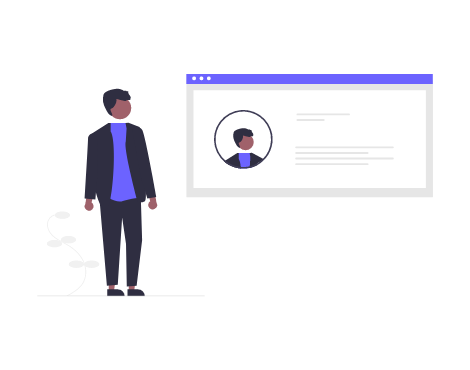In this section, we will discuss the nuances of communication between novices and veterans of the company. Tips and life hacks for both sides, adapting contact center agents.
This article refers to the tool for the manager.
Don’t miss our previous articles about agent and sales manager adaptation:
Practical demonstration of trainer’s skills
Critically important! During training, a trainer should be able to demonstrate the correct technique of dealing with real clients. They switch on the Oki-Toki and the trainer makes/receives demonstrative calls, particularly in sales. If the trainer is unable to demonstrate mastery of sales techniques by example, the training can be considered a failure. It will not be possible to gain the trust of the trainees and all the right words of the trainer will simply remain words.
In concrete numbers, you need 10-12 demonstrations for a sales training course. Ideally, at the beginning of the course, the trainer turns on recordings of successful sales calls of working managers and his personal sales for listening. Before the CRM training starts, the trainer himself demonstrates the skills. Not all conversations will end successfully, and it’s necessary to explain to the trainees that this is normal and analyze all the conversations with them in the context of ‘how do you think it could have been done differently/better’.
If you’re really afraid of risks, you can stick to only the trainer’s recorded conversations, but then, most likely the effectiveness of any collections of best calls that will be dissected with the trainees from a learning standpoint will be low. And, after all, why do you need a trainer who nor master the art he himself teaches?
Lifehack: If the director decides to attend training sessions, it will be fantastic if the trainer asks him to simulate a conversation with a Decision-maker (trainer as a Manager, director as a Decision-maker), and then discuss the dialogue together with the group. It’s the higher management that can provide practical, tangible advice from real-world experience, advice that the coaches can’t always offer. Moreover, the involvement of a company’s senior leadership in the onboarding of the agents acts as a strong motivational force. Top-management’s recounts of their personal experiences draw massive interest from their subordinates, thus it’s crucial to engage them. The only prerequisite is ensuring that the participating executives have mastered the art of providing feedback and appreciate the intricacies of adult education. In certain scenarios, such as in basic training, it is more appropriate to invite operational managers instead of top executives. Of course, one must apply common sense and match the scale and goals of the training task with the skill set of the invited expert.
The principle of “Objectification”
It’s incredibly beneficial to provide a clear illustration of the behavioral norms that the coach is explaining. For instance, if they explain that the agents of the inbound line must stick to their working schedule, as unplanned absence of any one of them results in an additional load on their colleagues, it will possibly be understandable, but not visually clear.
A fun and illustrative exercise is:
The coach fills a cup (preferably a plastic one) almost completely with water, places it on the table, and asks the group members to balance the table. When there are multiple participants, it’s easy to keep the table level to prevent any spillage and keep the cup from falling. Then, the coach gradually “sends participants on an unplanned break” (asks them to step away from the table) so that the tabletop tilts. In the end, either the water spills or the cup falls – the remaining participants just can’t cope with the “inbound load”..
Lifehack for introducing interns to each other
What’s the best way to introduce new interns to each other during the introductory training?
During the interview, the recruiter should identify and record 2-3 positive facts about the candidate (for example, started working at 16, recognized by management at a previous job, etc.). This information is passed on to the trainer.
When the trainer introduces the newcomer to the group, they project a slide on the screen with the [photo of the newcomer], the facts recorded by the recruiter, and the recruiter’s feedback (feedback is not mentioned until this moment). The feedback will always be positive, since the candidate was invited for training. The trainer voices the content of the slide.
This creates excellent effects:
- An unusual presentation is more memorable.
- Newcomers see that company representatives paid attention to them, remembered them. They realize that the interview questions were not asked just for the sake of formality. And overall… it’s communicated that no one is forgotten, nothing is forgotten, the company remembers the good. This is an important message.
Adapting agents with other employees and managers
From my perspective, it’s a great practice to familiarize the agents/managers with their future mentors and direct supervisors ahead of time. I usually invite supervisors/senior sellers to an introductory training for a brief self-presentation (no longer than 3-5 minutes) and a narrative of their career growth and company experiences (the speech should be well-rehearsed beforehand). Alongside this, the trainer should outline the range of issues the supervisor can help the agent resolve. From providing advice in difficult customer situations to coordinating interactions with other departments, for example, the Accounting department.
Some of my colleagues prefer to introduce the agents and their future direct bosses in a quasi-informal setting, like during lunch. I do not advocate for this approach, and while it doesn’t dramatically alter the outcome, one must understand that it’s easier to “cover” the whole group within the training structure, not everyone goes to the dining room for lunch.
The same applies to familiarizing with group leaders and service heads. Moreover, an important point to consider is that both present agents and newcomers should approach the HR and accounting department strictly in the presence of a senior: a coach or a supervisor. Otherwise, there is a risk of cultivating bad practices. For instance, a manager who decides to quit may go straight to HR to tender their resignation without consulting with their direct supervisor. In such a case, it becomes difficult to retain them.
It would be a good practice if one of the top managers could attend the training session for 5-10 minutes and briefly talk about:
- Themselves
- Company’s objectives, tasks, and plans
- How the future manager’s role ties into achieving the organization’s strategic goals
- About the team, and how the company promotes personal growth and progression (including in terms of increased personal income) – with specific examples
All four components of this speech and maintaining their order are essential.
Provision of training materials
Providing training materials for personal acquaintance is a standard practice. After all, there’s almost nothing there that a customer who has called the sales department or contact center, or been called, can’t learn. At the very least, everything about job introduction can be conveyed quite calmly. There’s nothing to label ‘for official use only’, and there’s nothing that an intern couldn’t tell their acquaintances.
If you give out printouts, make sure they’re neatly and professionally arranged in an A6 format booklet (so it’s easy to carry around in a bag). Personally, I’m an advocate of providing web access to training materials. They can be read and listened to (like recordings of best calls) on a smartphone, for instance, on the way somewhere. The only thing – keep track of the number of views/downloads. If the views are low – either there’s something wrong with the material or the training process.
Break Session Standards
For rapid agent adaptation, training breaks should be at least 25-30% longer than corresponding breaks in shifts. Otherwise (especially in cases where training lasts all day), beginners may become overwhelmed. Extending break times does not necessarily mean sending agents “out for a walk”. Spare minutes can (and should) be used for productive exercises, acquainting with other staff members, discussing “educational stories” and other adaptation activities.
A Few Words About Workplace Exercises
This is particularly relevant for call centers. Sometimes, the call center management tries to introduce elements of workplace exercises. This is a great initiative that directly affects work productivity. But agents often evade performing these exercises. The reasons are understandable: some agents “don’t want to look silly”, others “don’t understand why they suddenly need to do this”.
The problem can be generally resolved by teaching people simple exercises during the introductory training. There is a real practical benefit that finally emerges from the argument “that’s how we were taught”. Secondly, start with simple exercises, not the equivalent of “high kick in a triple jump”.
To prevent anyone from “feeling silly”, suggest prospective agents to perform 1-2 eye exercises before each break during training. This is entirely sufficient. If the training course is long, it’s quite possible that a habit will be formed among trainees. If a habit does not form – no harm done. If a similar practice is utilised in the company, it’s going to be much easier for the agents to accept the idea after qualification for independent work. And of course, there is no need to force anyone.
Implementing elements of eye exercising at the training stage – an additional example of how one can adapt newcomers to real working conditions. Whatever people acquire from the introductory course, they will comfortably perceive and use in their work.
Adding a little decoration to the process
In addition to everything said, we have a cherry on top (or an apple or an orange, if you will). At the end of the training day (just not the first one), give the newbie agents oranges. But not just any oranges, ones with a little company logo sticker on them. We guarantee plenty of laughs and smiles. There must be some fun to the learning process after all.
We hope our article will make the adaptation process for the new agents easier. In the next part, we will discuss how to organize the process of the new sales managers’ independent work.
You can get an insight into the work at the Oki-Toki agent’s seat here.



